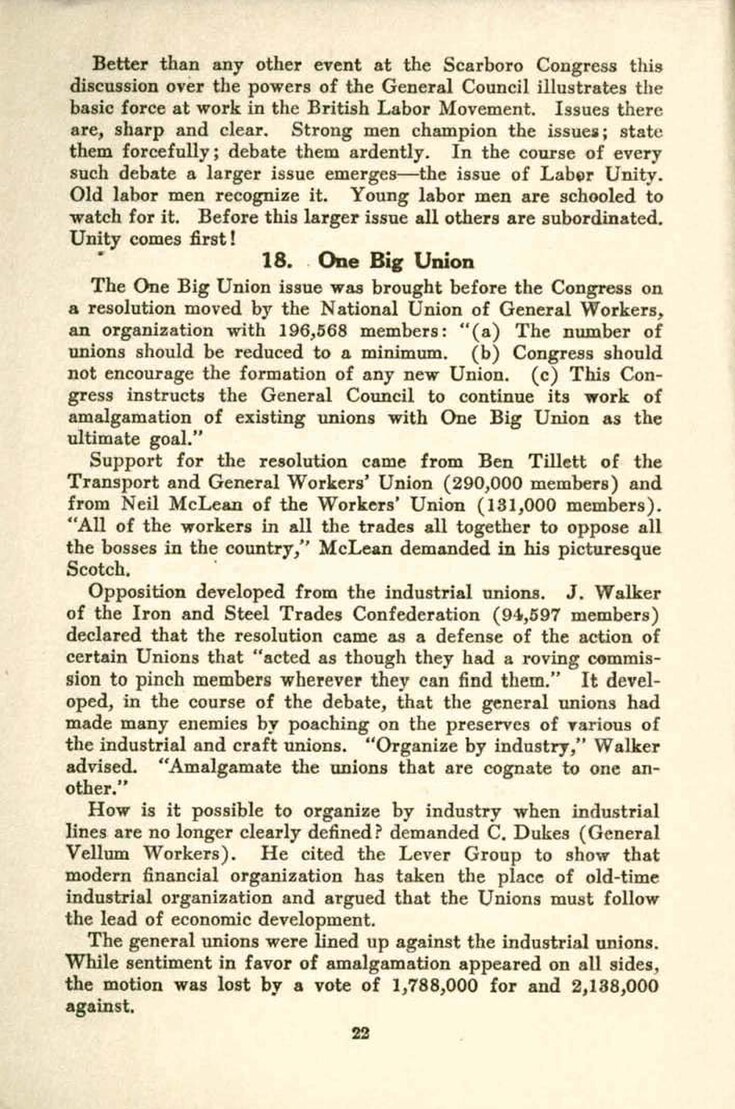Better than any other event at the Scarboro Congress this discussion over the powers of the General Council illustrates the basic force at work in the British Labor Movement. Issues there are, sharp and clear. Strong men champion the issues; state them forcefully; debate them ardently. In the course of every such debate a larger issue emerges—the issue of Labor Unity. Old labor men recognize it. Young labor men are schooled to watch for it. Before this larger issue all others are subordinated. Unity comes first!
18. One Big Union
The One Big Union issue was brought before the Congress on a resolution moved by the National Union of General Workers, an organization with 196,568 members: "(a) The number of unions should be reduced to a minimum. (b) Congress should not encourage the formation of any new Union. (c) This Congress instructs the General Council to continue its work of amalgamation of existing unions with One Big Union as the ultimate goal."
Support for the resolution came from Ben Tillett of the Transport and General Workers' Union (290,000 members) and from Neil McLean of the Workers’ Union (131,000 members). "All of the workers in all the trades all together to oppose all the bosses in the country," McLean demanded in his picturesque Scotch.
Opposition developed from the industrial unions. J. Walker of the Iron and Steel Trades Confederation (94,597 members) declared that the resolution came as a defense of the action of certain Unions that "acted as though they had a roving commission to pinch members wherever they can find them." It developed, in the course of the debate, that the general unions had made many enemies by poaching on the preserves of various of the industrial and craft unions. "Organize by industry," Walker advised. "Amalgamate the unions that are cognate to one another."
How is it possible to organize by industry when industrial lines are no longer clearly defined? demanded C. Dukes (General Vellum Workers). He cited the Lever Group to show that modern financial organization has taken the place of old-time industrial organization and argued that the Unions must follow the lead of economic development.
The general unions were lined up against the industrial unions. While sentiment in favor of amalgamation appeared on all sides, the motion was lost by a vote of 1,788,000 for and 2,138,000 against.
22
